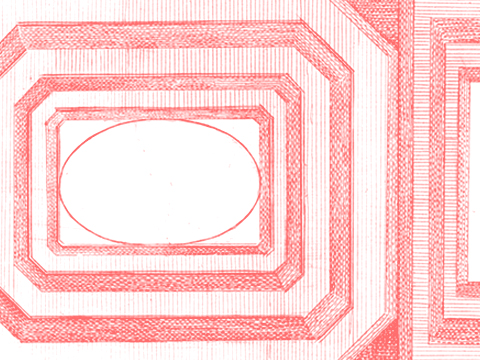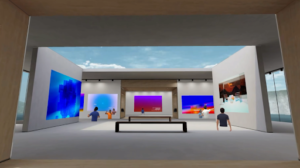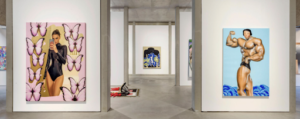
What do Matejko, NFT, and virtual art galleries have in common?
The creative process has been the same since the dawn of time. An idea is born in the head, and then with the help of colors, sounds, or words is transferred from the mind of the creator to the world of mortals. So far, technology has supported creators primarily by providing tools that allow them to create abstract things, such as 3D animation. However, there were no methods of selling them effectively, especially when it comes to unique and unrepeatable works, such as paintings – until recently.
So how to effectively monetize your works in the virtual world and introduce people to your world even more by selling your paintings in a virtual art gallery? Read on to find out. To stimulate your imagination on possibilities, please note that the artwork below was sold for 3 million US dollars.

Picture 1. Source: https://boredapeyachtclub.com/#/
How is the value of art created?
Firstly, we need to look at the factors that give a work of art its value. We are not painters, so we will not touch on technical details here. We could even argue that they do not play such a big role in art price evaluation because art is relative and differently interpreted by everyone. We will focus more on the psychology of value creation. What primarily gives value to art is the artist who created it – ownership and the ability to prove that a particular work of art is original and authentic. For a better illustration, we will use the example of the Mona Lisa. We can have a lot of very good fakes, which technically do not differ from the original, but are sold for a few dollars. What makes the original priceless and an identical copy cheap and freely available?
To begin with, the fact that the original Mona Lisa, the Italian Gioconda, was painted by Leonardo da Vinci – a pioneer and one of the greatest minds in human history. But why would anyone be potentially willing to pay unimaginable sums for it? Well, because he will be in possession of the original work of art from the brush of the visionary. And how does he know that a given “specimen” is an original? In the case of physical works of art, most often thanks to organizations that specialize in authenticating such information.
So why is it worth so much? Because there is only one Gioconda – painted by the master, and if it were not for the fact that it hangs in the Louvre and remains the property of the French government, it could be owned by only one person who would be able to prove that this Mona Lisa is really THAT Mona Lisa.
The next question is – why haven’t virtual images reach such high prices, then? So far, virtual art has struggled with all three of the aforementioned challenges. Everyone could just take a screenshot or save an image. Storing digital exhibits on secure and inaccessible servers was pointless because then no one would be able to see them. It was not possible to establish that a given copy actually came from a particular artist. And ownership was out of the question. How can you own something that anyone you show it to can clone in just a few mouse clicks?
Everything changed with the invention of blockchain technology, namely NFT (Non-Fungible Token), i.e. non-exchangeable, unique tokens. The technical details of its operation are not that important here, the results are. Blockchain technology provides us with incredible security – we can be sure that no one will cover up anything here, and no one will be able to hack it. It also ensures transparency – we can have access to everything that is happening at any time, including the entire history of transactions, i.e., actions taken on the blockchain. It also allows for the identification of users, which may or may not be fully anonymous. All this gives us the opportunity to re-add value to our art.
Now, let’s look again at the value creation factors mentioned earlier and compare them to the NFT. The creator “signs” a virtual art with his address, which cannot be changed in the future, so you can easily tell who the author is. What’s more – no matter how many times a given work changes its owner, thanks to the transparency of the blockchain, we will always be able to identify the original creator. We also get rid of the problem of non-originality. Even if someone makes a print screen of our file, he will only have a meager copy of the Mona Lisa, because its owners – as proved by the NFT – are us. We also naturally move to the next principle, which is ownership, there can be only one rightful owner. Thus, we tick off the third and last factor of building value.
Creating a virtual vernissage
Time for the cake by the ocean – creating a virtual work of art is one side of the coin, but the other important task is its proper display. In the real world, we rent a place, hang our paintings, and set the right mood through lighting and decoration. However, we have to face several challenges, such as costs. We also limit the exhibition to one place in the world, and as much as we would like, we won’t skip the rules of physics or math… What if we created our gallery in virtual reality, as shown below?

These things are already happening and people are earning crazy money from it. An example of a project that combines blockchain technology with virtual reality is Metaverse created by Facebook, or the Decentraland project, which allows you to rent an art gallery and sell your paintings there.

What’s more, users are able to instantly purchase particular works of art and do what they want with them, but at the same time are unable to steal or destroy them.
And there we come, all dressed up in white – because that’s exactly what we focus on at Mateico. We are building a platform where you will be able to easily create and sell your virtual exhibits in the form of NFTs, as well as digital galleries where you will be able to exhibit them. We want to give talented and hard-working artists a chance to release their artistic potential by taking full advantage of the technological possibilities of the world and for the highest possible earnings, because in the end – you should get good money for good art.
#StayTuned
